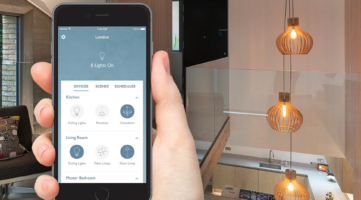How will working from home affect our energy bills?
Millions of us working from home will have to wrestle with higher energy bills this winter and for some that will be a huge challenge.
While some experts are predicting that the amount of energy we use will double, others are more conservative, but all agree that it’s logical we will consume more.
The clocks have just gone back, so we’re looking forward to those shorter days and darker evenings while the amount of available sunlight begins to shrink until we begin to see the light in February. So it makes sense to invest in energy-saving LED lighting that reduces the electricity you use by up to 85%. With the best LED bulbs and lamps, you get the added bonus of far better quality light.
The average energy bill last year was £1,254, according to the regulator Ofgem – that’s almost £3.50 a day.
According to Uswitch.com many of us homeworkers will be using 25% more electricity and 17% more gas, which will mean up to £195 a year added to our energy bills. The price comparison and switching service estimates that for those of us on the most expensive tariffs it will be £16 more per month.
Winter energy costs
A slightly less, but still sobering, view of our changing energy usage comes from Energy Helpline, another price comparison company, which advises that our energy bills could rise by almost a fifth this winter.
Their research identifies patterns that will result in the UK’s total domestic energy bill ballooning to nearly £2 billion between October and March. Their figures reveal that those of us working at home could see our utility bills soar by £107 because of increased usage during the winter.
Apart from keeping warm, we will clearly be using appliances more, with more trips to the fridge and freezer, more time charging and powering our laptops, phones and tablets, more cooked meals, and more home entertainment.
Energy Helpline believes that many homeworking households may have run up an energy debt over the summer, which it estimates could as much as £2 billion nationwide – or £94 per household. They face the prospect of being chased for payment by their energy suppliers, who have been given the leeway to press for debt payment.
Tom Lyon, Director of Energy at Energy Helpline, said:
“With many offices expected to be partially or completely closed over autumn and winter, millions face a worrying hike in bills from working at home at the time of year when we use the most energy. It’s vital that energy suppliers and Ofgem do all they can to support consumers who are struggling to pay spiralling energy bills.”
Energy saving tips
The move to homeworking for millions of us has added an extra urgency to the need to control our utility habits and drastically reduce how much energy we consume. Apart from the wise investment in energy-efficient LED lighting, we can cut our energy costs further by making sure all appliances and services are economical.
This will include taking a close look at our taps and showers, and investing in eco models that reduce water use by up to 60%. That’s a benefit because less water means less being pumped and heated, so costs come down.
We can be mindful of how we work at home and make sure we don’t fall into the habit of working longer hours unnecessarily, which pushes up the electricity usage. It’s good to keep an eye on how much time we’re spending checking emails, or on work-related social media. And take regular screen breaks, including time for lunch, which can also improve productivity.
If you can, it’s very energy effective to work in rooms with natural light. Apart from reducing electricity use, it’s better for your wellbeing and general mood.
We can make sure that we unplug all those unnecessary devices, that can be pleasant but energy-guzzling distractions – the TV, games consoles, extra monitors. And to really minimise electricity usage, it’s good to unplug anything appliance on standby like a printer or not in use – phone chargers or other stuff.
With that in mind, investing in energy-saving power strips can help cut consumption. For example, you can use your computer while cutting standby power to the printer.
Thinking of those pieces of work kit, it’s worth checking whether they are really past their sell-by date, or at least are much less energy efficient models than you could have. We might be in this new homeworking culture for quite a long while yet, so if every piece of equipment is energy efficient, you will save on bills.
We can keep control of energy costs as it gets colder by adding a layer or two of clothing rather than turning up the heating – and be active throughout the day.
And we should not forget to check and switch energy supplier to ensure we have the best deal.
Green Homes Grant
The Green Homes Grant recently launched by the government is worth up to £10,000 for making homes more energy efficient. You can find out how to get one here. For most of us, the maximum voucher amount will be £5,000 but households on low incomes, receiving benefits, will be eligible for up to 100% funding, up to a maximum of £10,000.
Tax relief
We can also claim back on homeworking expenses through the tax system. The government is allowing claims so you don’t pay tax on an extra £6 a week of what you earn, which is a saving of £62.40 a year for basic rate taxpayers and £124.80 for higher rate taxpayers. You don’t need receipts and you can sign up directly here.

